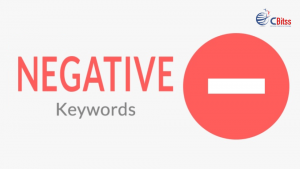Negative Keywords in PPC:-
One of the steps you can create your ads is that your ad will appear in search terms. I hope you have been specific about your keywords focusing on user intentions and compliance. As you might imagine, negative keywords are roughly the opposite of your targeted keyword. They help guide you to Google, direct the types of search terms for which you do not want to show.Type of keywords that prevent your ad from showing on a particular word or phrase. Your ads are not showing to anyone searching for that phrase. Also known as a negative match.
For example, to open your “campaign” or “ad group” as “open”, you declare Google Ads to show your ad for any search that contains the term “free”. On your showpiece, your ad is less likely to appear on the site when your negative keywords match the site’s content.
How Negative Keywords Increase your PPC Profile?
Use “negative keywords” and your PPC profits can dramatically increase. This valuable technique tells Google that your statement should not be displayed. For example, if you are selling a brand new Apple brand, you do not want your statement to appear when someone is looking for “notebooks with a modified apple there must be your negative statement for your campaign.
Negative keywords are an integral part of any successful PPC campaign, and your ads will stop showing when your search query contains terms that aren’t relevant to your ad.
By adding negative keywords to your campaign, you can filter out unwanted traffic and help you reach the most appropriate prospects while reducing costs.

To find, set up, and add negative keywords to your Google Ad words account, follow these steps:
- Search for negative keywords
- Set up your list of negative keywords
- Go to “Negative keywords” in your Google Adwords account
- Enter your negative keywords
Finding negative keywords
The best way to find negative keywords is to do that – you guessed – by checking the actual user query data based on the people they searched for. This can be done through Google Ad Keyword Planner and Search Terms Reports. The Google Advertising Keyword Planner is designed to help you find keywords to propose and not exclude. (Google does not really care if you spend a few more dollars that you do not need). But you can also use it to find the negative vocabulary ideas on your list. When you search for the terms “calendars”, you’ll find the appropriate search engine listing as well as the search volumes and some other competition data. If you see terms in the list that you know do not apply to your business (like “free” and “printable” here), consider adding them to your negative keyword list.
The Search terms report shows you actual queries written by people on Google to show your ads. Once you have a solid knowledge of the types of queries that triggered your ad, you can start collecting lists of positive and negative keywords. This method can yield some solid results.
Prepare your list of negative keywords
Prepare your Google Negative Keywords list, each in [square brackets] and the prefix “-“. Examples of our “apple notebooks”.
- [apple laptops discount]
- [reconditioned apple mac laptops]
- [colored apple laptops]
- [pink apple mac laptops]
- [used apple laptops]
- [linux laptops apple]
- [mini laptops from apple]
- [refurbished apple laptops]
- [orange apple laptops]
Where do you enter negative keywords?
You may have noticed all of the negative keywords when you were adding keywords for a campaign or ad group. This tag is next to the Keywords tab!
You can either enter negative keywords at the campaign level that will apply the negative keyword across your entire campaign or alternatively you can also define them for specific ad groups depending on the complexity of your campaign. Just select the ad group where you’d like to add your negative keywords.
Note that, like keywords, you can define whether each negative keyword matches exactly, broad, or phrase.
Use Negative Keywords:-
Google identifies negative keywords as a type of keyword that prevents your ad from showing on a particular word or phrase. Your ads are not showing to anyone searching for that phrase. It is also known as a negative game. ”
A common example of negative keyword usage is ‘cheap’ (Google uses ‘free’ as an example). Let’s say you make bespoke furniture or high-end watches; It is understandable that you do not want to pay for clicks of searchers who are looking for cheaper alternatives.
You must also ban ambiguity. In her ultimate keyword and negative keyword guide, Lisa Raehsler used a good example of blueberry muffins, as the user’s intention for both recipes and bakeries could be – two very different user recommendations.
In such a situation, you will add “recipes” or “bakeries” to your negative keywords, as it may fit.
Types of Negative Keywords:-
Broad-matched:- The broad-matched negative keyword – as Google knows – is “Setting up a keyword that lets you exclude your ad from searches where each word, in any order, appears for a keyword for your keyword in search.”
Phrase-match:- With a negative keyword, you can exclude your ad for searches containing the exact query. Searches can contain additional words, and the ad will not show as long as the keywords are included in the same search.
Exact-match:- The exact match keyword allows you to exclude your ad when searching for the exact keyword phrase – without additional words. Your ad may continue to show for searches that include a keyword phrase with additional words.
PPC Training in Chandigarh provides training with live projects and also offering the complete Digital Marketing Course in sector-34A, Chandigarh.

